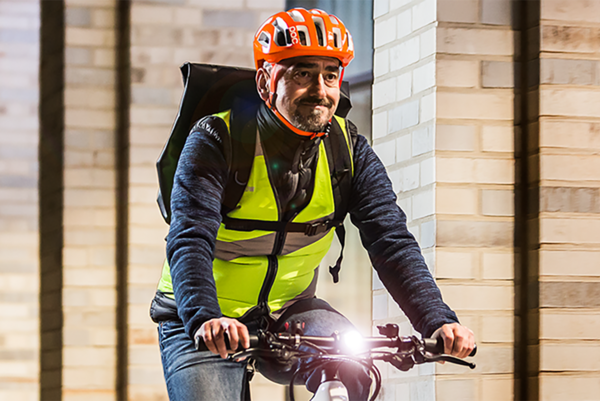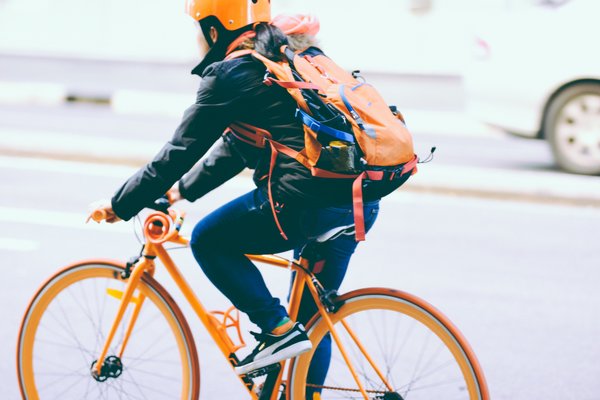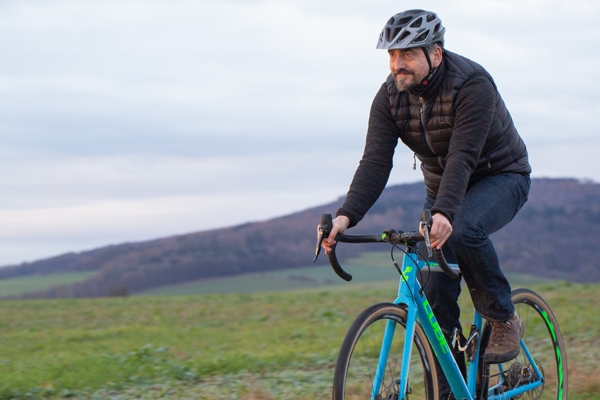
The Bikeleasing spring check: fit for the new bike season
Share blog article:
As the temperatures rise, so does your urge to get on your bike and start cycling. To help you ensure that your bike is in good shape before you start the season, we have a few tips for your bike’s spring check:
- Clean start
Anyone who has moved their bike in winter should begin by removing dirt and salt residues. The best way to do this is with a gentle manual wash: Spray the bike with bike cleaner and let it soak for a short time, then clean the entire bike thoroughly with a cloth or sponge. Tip: An old toothbrush will help you reach into tricky nooks and corners, such as brakes, front derailleur and rear derailleur. Finally, let the bike dry and then polish off any cleaning residues with a clean cloth.
- Lubricate, grease, oil
Once your bike shines and sparkles, it’s time to lubricate and oil its moving parts. Note that special products are available for each of the bike’s components.
For hubs, headset and bottom bracket, it’s best to apply classic bearing grease which adheres strongly, minimizes friction and provides lasting protection against moisture. The same lubricant is also suitable for the seat post. Suspension forks and shocks are best treated with a special grease. Bike manufacturers typically recommend certain products for maintenance or even offer their own. In general, lubricants to be applied to such components should not be too viscous or too thin (which meansthey may evaporate quickly). Chain and gears: While the wet winter season calls for chain oil that adheres well, you can use universal oil for maintenance in the warmer season.
- Tighten nuts, bolts and fasteners
Is everything tightened the way it should be? Check whether all nuts, bolts and quick-releases on the wheels and the seat are tight enough. Tighten any loose bolts using a torque wrench you ensure that they are not too tight. Remember that high-end materials such as carbon are easily damaged if the tension is too high due to overtightening.
- Check brakes
Does the warmth of the sunbeams have an exhilarating effect on you? Do you feel the urge to go cycling in the spring air? Before you do, make sure that the brakes on the front and rear wheels still grip properly: Are the brake cables still intact, so that the brake is easy to use, without excessive force, and the braking effect can be dosed accurately? Is there still enough tread on the brake pads? The rule is: If the grooves in the brake pads are no longer visible, it is high time to have the pads replaced. To learn more about the causes of a drop in braking power and about the different brake types, check the YouTube channels of our partner dealers.
- Adjust gear shift
Does the chain run smoothly or does it make a noise caused by friction on the derailleur when you’re riding? Can the gears be shifted smoothly and accurately? If not, the gear shift must be adjusted: By carefully tightening or loosening the tension screw, you can fine-tune it yourself with ease. Turn the screw clockwise to move the rear derailleur toward the smaller sprocket, or counterclockwise to move the rear derailleur toward the larger sprocket.
- Check lighting system
If the bike has not been used for a long time, contacts may be dirty or oxidized or damaged. If the lights on your bike don’t function at all or don’t work properly, check the cable lines for breaks and check all connectors to see if they are connected properly. You should check for and replace any defective bulbs. Battery-powered bike lights should be freshly charged after hibernation
- Tires and tire pressure
A closer look at the tires will tell you: Is there still enough tread on your bike’s tires or is it time to get some new ones? It’s quite normal for tires to gradually lose pressure after a long period of time. This does not necessarily indicate a hole or puncture. An air pump with a built-in pressure gauge makes it easier for you to fill your tires to the recommended pressure. You will find this information on the sidewall of the tire. In general, lower pressure is more suitable for unpaved roads, while higher pressure minimizes rolling resistance on paved surfaces. If you are not sure, just try out how the tire pressure affects the handling of your bike on different surfaces.
- Bell and helmet
It’s safety first. That’s why you should welcome spring with a little “ring the bell” test. Others out there in the traffic should be able to hear the ringing of your bicycle bell. For your own safety, you ought to wear a helmet. You probably haven’t worn your helmet for a while, so it’s a good idea to do a visual check: Are there any signs of external damage? Are parts of the outer or inner shell coming loose? If so, it’s time for a new bicycle helmet. By the way: You should definitely replace your helmet after five years at the latest. Because, after such a long period of time, there is no guarantee that the materials used will still protect your head sufficiently in the event of a fall or crash.
All set?
Now that you have thoroughly checked and serviced your bike, you are ready to go: There's nothing to stop you from enjoying your first ride of the year.
By the way, Bikeleasing has great ideas for exciting trips ready for you on komoot: from an easy-going start to the season to the first major tour of the year. You can also find a list of particularly bike-friendly cities in our blog – there’s something for everyone!
Included in the Bikeleasing inspection package for our customers: professional service
If you are not sure whether everything is running as it should for your bike, simply visit your nearest Bikeleasing partner dealership – where your bike will be shaped up by professionals. This bike check is included in our Bikeleasing inspection package!
We wish you a great start to the season!



